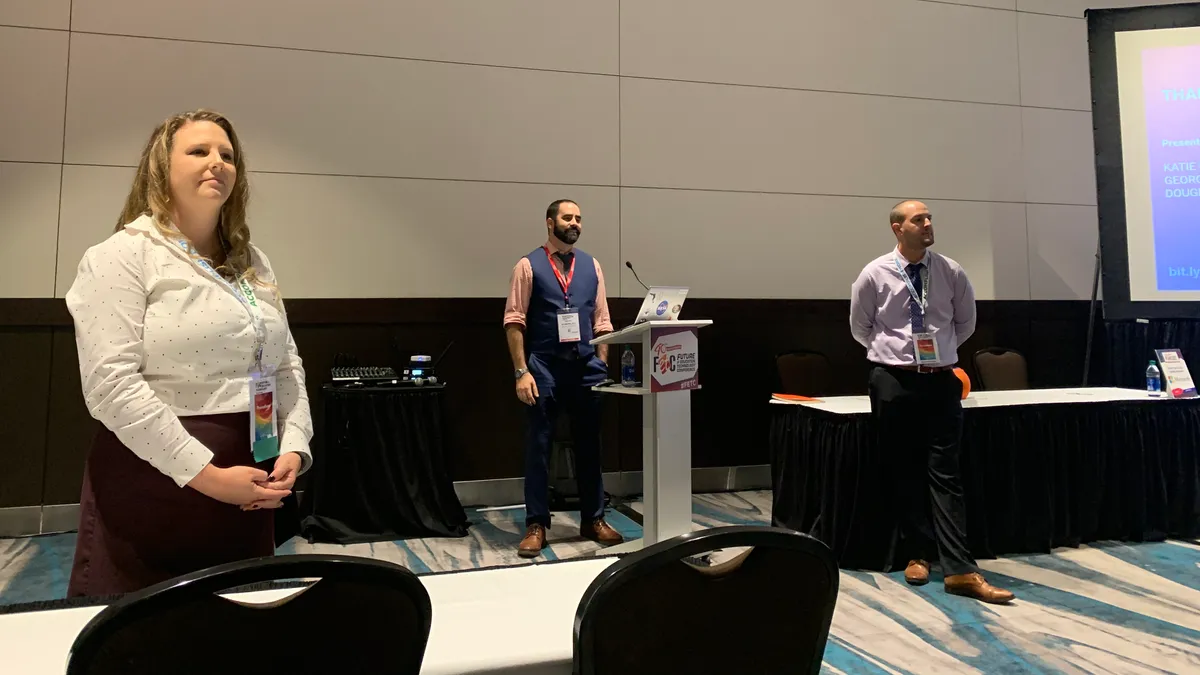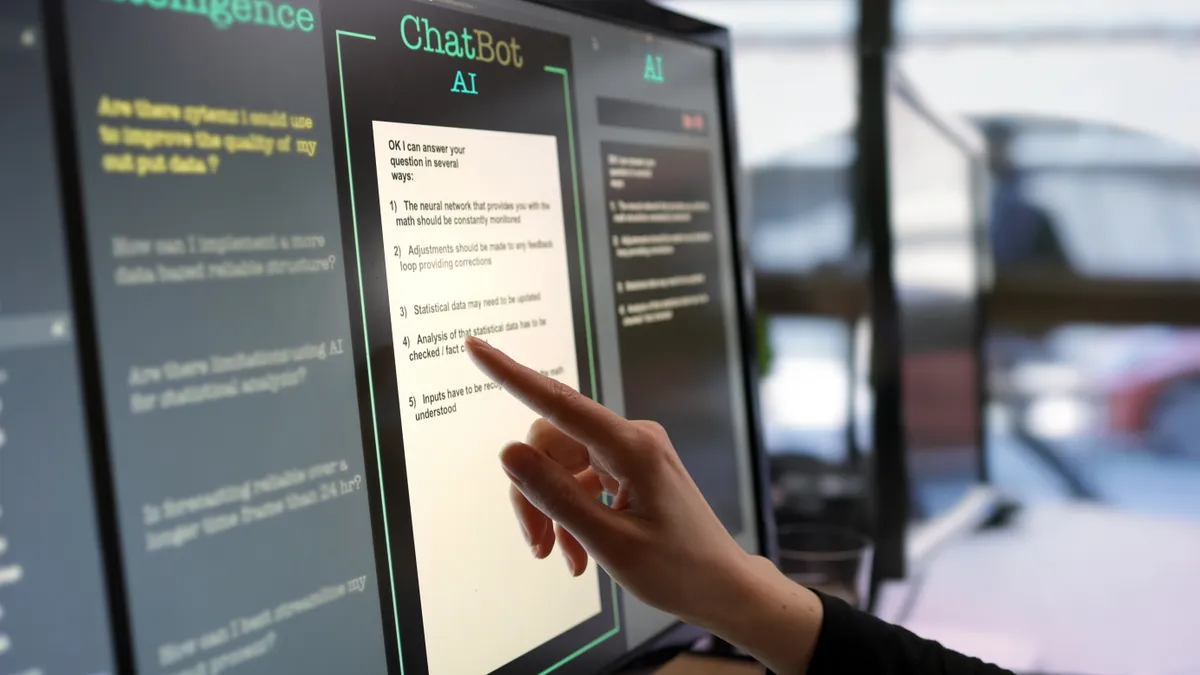MIAMI — It's become a popular refrain: The "sit-and-get" approach to learning is just as played out for professional development as it is for students. But how do you make PD an immersive, engaging experience that, in turn, produces that same sort of experience in the classroom?
In a Wednesday afternoon session at the Future of Education Technology Conference, three educators laid out their approach in a session titled "Design Thinking + Intentional Lesson Planning = Engaged Professional Development."
As Martin County Schools (Florida) Digital Learning Specialist Katie Bond explained, her district wanted to make PD a richer experience for teachers. Inspired by a Florida Council of Instructional Technology Leaders session from last year's conference, as well as an approach used by Google, the district set out to do just that with a design thinking model.
What does that look like in practice?
Douglas Konopelko, a CDW education strategist who previously served as the district's coordinator of digital learning, told attendees the district did a significant amount of research on the design thinking model and how it fits into lesson planning.
The product of their research? CampTEACH, for Technology Empowering Academic Change.
During the school year, these digital learning training sessions are held on Saturdays and in two-day installments during the summer, Konopelko said. At their core is the question of “Where does effective tech integration in the classroom begin?”
“When we're talking about lesson planning, that can get really, really granular,” Konopelko said, but added that the idea is to think big-picture.
Educators can only sign up in groups of four, because collaborative planning doesn’t happen alone, and the sessions require educators to have a specific standard or lesson in mind before they begin. This avoids the scenario in which a teacher from a different subject area, school or grade level attends alone and tries to force a fit in what is a “hugely collaborative process," he said.
The district's current coordinator of digital learning, George Vogeley, said that before they attend CampTEACH, teachers are asked to view the following TED Talk video to give them more background on the design thinking process — broken down into empathize, define, ideate, prototype and test.
Supply boxes are provided to help teachers brainstorm during their planning, with materials including:
- markers, pens and pencils
- rainbow fuzzy sticks
- paperclips and tape
- colorful paper
- sticky notes
- Play-Doh
- stickers
- Legos
The training session is organized into three components: an introduction to concepts like the substitution, augmentation, modification and redefinition model and the four C's of 21st century skills (critical thinking, communication, collaboration and creativity), a design thinking process walkthrough and open collaboration between groups.
Bond said covering the four C's is critical because “we wanted teachers to focus on student action and the standards, and not so much the digital tools.” The sessions include various digital tools, but the idea isn't for those tools to be at the center of things.
The presenters use a Netflix analogy to discuss SAMR. DVDs substituted VHS, Netflix augmented rental by shipping DVDs to consumers and then modified and became on-demand. Now algorithms are redefining consumption through streaming platforms. But that redefinition wouldn’t be possible without the prior steps that began at substitution.
If the model is compared to a swimming pool, substitution and augmentation are at the shallow end of change, while modification and redefinition are at the deep end, Bond said. An attendee added the SAMR model is about being in the right spot at the right time with the right tech, and that it’s important to “swim laps” rather than tread water to be in the best position for success.
Educators in the training are then asked to think about how they would take a traditionally designed lesson and enhance it with tech based on the SAMR model. They might, for example, give students more choice in the topic or the final medium of the presentation, based on interests and talents.
Once they get into the design thinking portion of the session, the really deep work begins. Vogeley detailed each step of that process as it takes place.
- Empathize — Considering your students and the standard?
- Define — What is the need for incorporating digital tools or for students to use the four C’s?
- Ideate — Use an improv-inspired “Yes, and…” activity to bounce ideas around, writing as many as possible for the lesson on sticky notes while not being negative or turning any down, before organizing them and beginning an outline.
- Prototype — Build physical models illustrating the lesson, and when each group shares, the others begin by saying what they like before offering additional ideas.
- Test — Build out the lesson, specifically the tech aspects, considering the delivery platform, workflow, resources and materials. The ultimate test, of course, is in delivering the lesson to students.
The collaboration between groups takes place at the back end of that process.
Thus far, the CampTEACH workshops, field trips and hands-on sessions have covered topics including Google for Education, green screening, ActivInspire and leveraging technology tools for formative assessment.






















